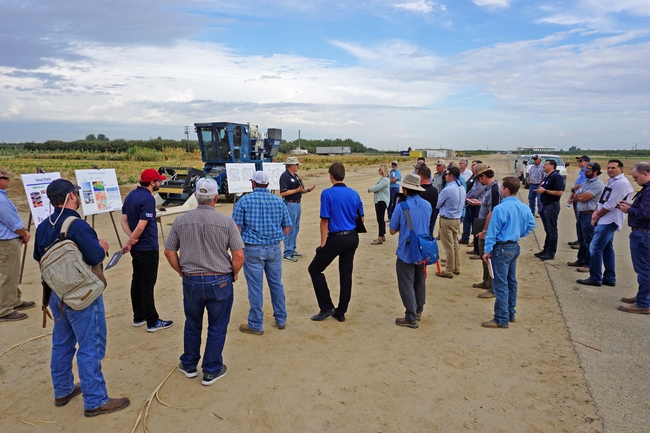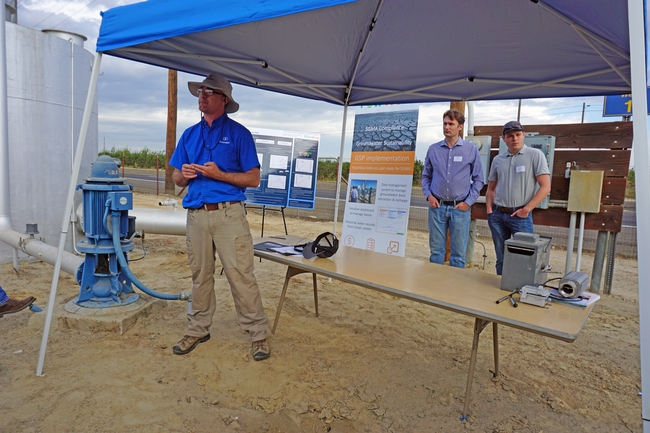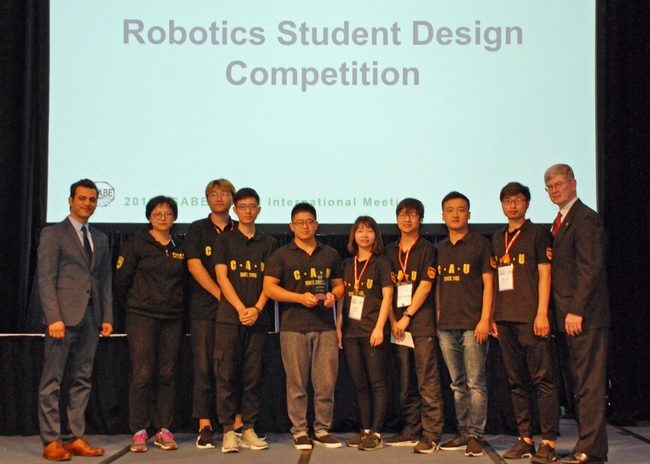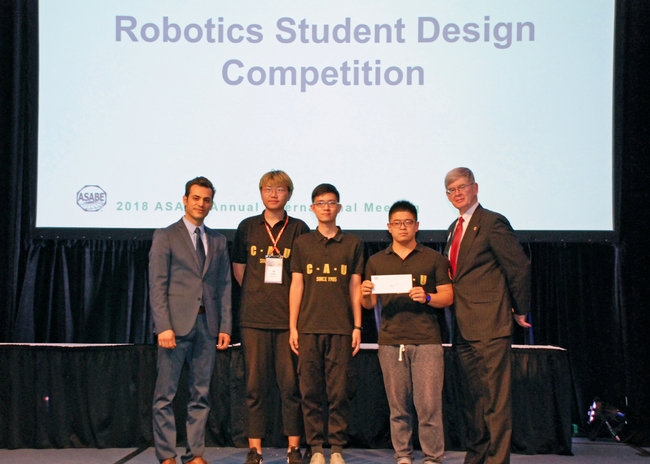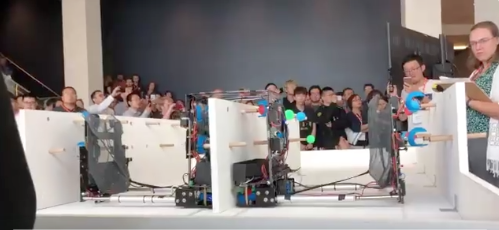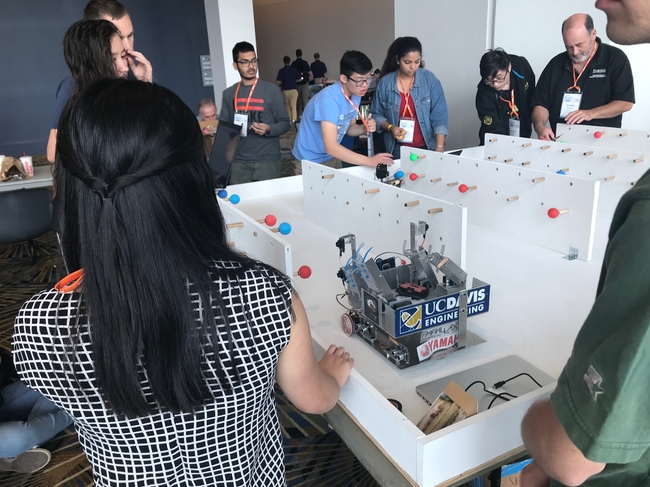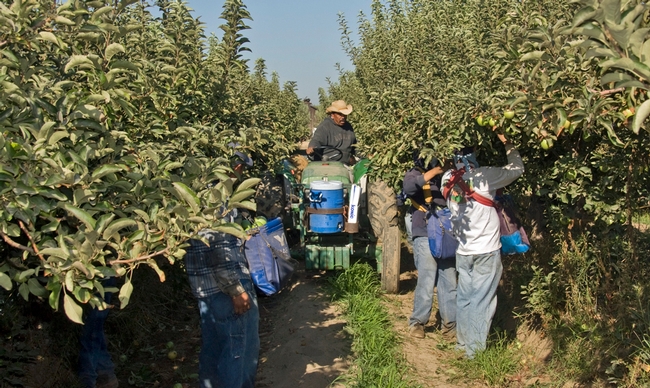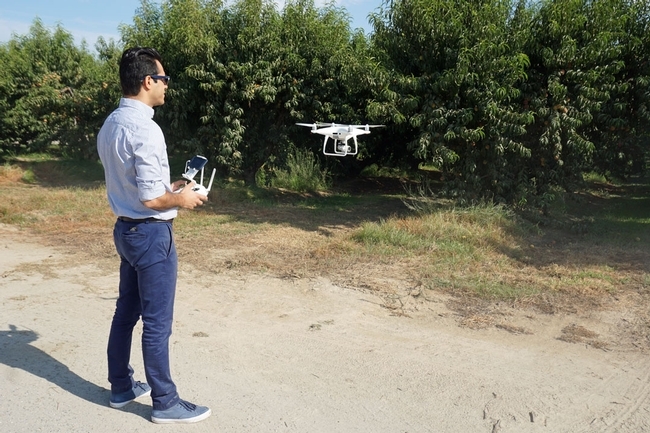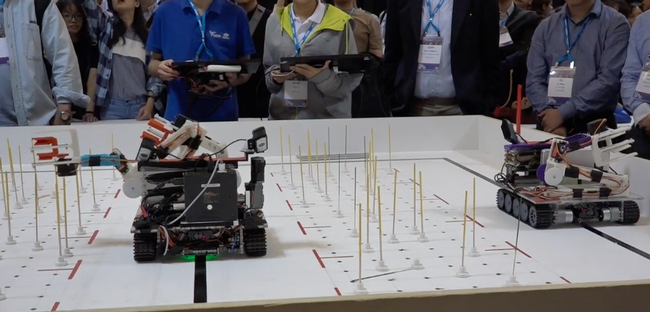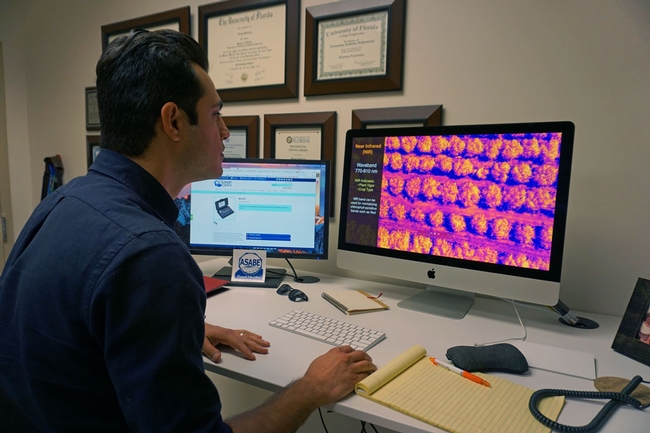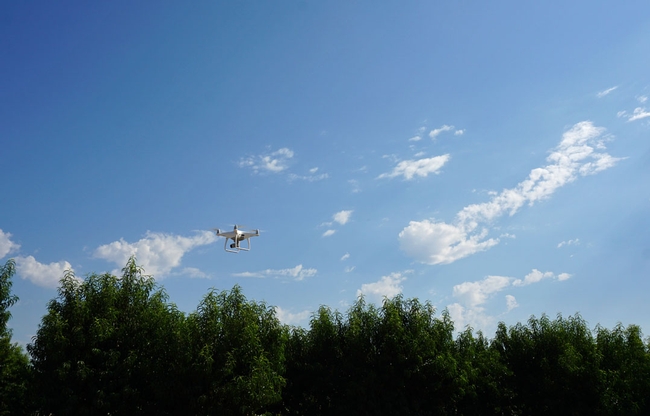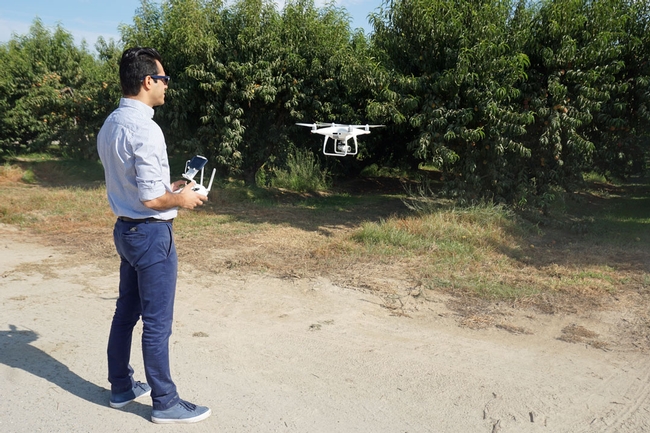
Posts Tagged: pourreza
ANR in the news May 16-31, 2020
ASEV's Invasive Pest Webinar Series Starts June 3
(Wine Business) May 30
… The invasive pest webinar series will include:
June 3: Impact of the New Invasive Pest, Spotted Lanternfly, in the Northeastern Vineyards by Heather Leach (The Pennsylvania State University, University Park) at noon – 1:00 p.m. (PDT)
July 2: Fruit Flies and Their Role in Causing Sour Rot by Megan Hall (University of Missouri, Columbia) at noon –1:00 p.m. (PDT)
October 22: Lifecycle Modeling and the Impacts of Climate Change by Gwen-Alyn Hoheisel (Washington State University, Prosser) at noon – 1 p.m. (PDT)
November 12: Invasive Species Response: Lessons from the European Grapevine Moth Collaboration Program by Monica Cooper (University of California, Cooperative Extension, Napa County) at noon – 1 p.m. (PDT)
https://www.winebusiness.com/news/?go=getArticle&dataId=231500
UC Davis sponsoring COVID-19 symposium
(Woodland Daily Democrat) May 30
… Statewide Extension apiculturist Elina Lastro Niño, based in the UCD Department of Entomology and Nematology, is scheduled to share her expertise on bee venom, one of the possible COVID-19 treatments suggested by researchers but not yet investigated.
… Among those asking questions will be Jennifer Cash, the newest faculty member of the UCD College of Biological Sciences; Fred Gould, a National Academy of Sciences member; UC Cooperative Extension adviser Surendra Dara; and University of Brasilia graduate student Raquel Silva.
https://www.dailydemocrat.com/2020/05/30/uc-davis-sponsoring-covid-19-symposium/
Gardens Have Pulled America Out of Some of Its Darkest Times. We Need Another Revival.
(Mother Jones) Tom Philpott, May 29
The first great national gardening mobilization came two decades later, scholar Rose Hayden-Smith writes in her 2014 book Sowing the Seeds of Victory: American Gardening Programs of World War 1. Building on a Progressive Era push to install gardens in public school yards as an educational tool, President Woodrow Wilson tapped the Bureau of Education, with funding from the War Department, to launch the US School Garden Army shortly after sending troops to intervene in the European conflict. “A Garden for Every Child,” its slogan promised. “Every Child in a Garden.”
The School Garden Army was just one of several national programs that “encouraged Americans to express their patriotism by producing and conserving food,” Hayden-Smith adds. Wilson also promoted a civic gardening boom through the Committee on Public Information, which hired writers, artists, scholars, and advertising professionals to create marketing campaigns to promote school, home, and community gardening.
More scientists joining UC Cooperative Extension
(Daily Democrat) Jim Smith, May 29
Four staff research associates will join the ranks of UC Cooperative Extension scientists in the coming months to support nut crop advisors conducting critical research in walnut, almond and pistachio production.
The California Walnut Board, the Almond Board of California and the California Pistachio Research Board together have provided about $425,000 to cover annual salaries, benefits, travel and equipment for the new UC Cooperative Extension staff. Under the terms of the agreement, the new positions will be funded annually for up to three years, pending available funds and success of the program.
Tree Nut Industry Provides Funding for more UCCE Researchers
(Ag Net West) May 29
The California tree nut industry is helping to provide funding for four new research associates who will become part of the UC Cooperative Extension system. The addition of the new personnel is being made possible by the California Walnut Board, the Almond Board of California, and the California Pistachio Research Board who have contributed a total of $425,000 in funding support. Collaborations like this are one of the many ways that the UC system is able to support important agricultural research through alternative funding methods.
http://agnetwest.com/tree-nut-industry-provides-funding-for-more-ucce-researchers/
Modoc County continues to see zero coronavirus cases
(Action NewsNow) Ana Marie Torrea, May 28, 2020
…Next month, the Modoc Junior Livestock Auction is planned for June 8 to June 12. Action News Now reached out to the U.C. Cooperative Extension which oversees the auction. A representative tells Action News Now that they've already made significant changes to the event.
The event's Facebook page says it is working to follow state guidelines by increasing seating and sanitation.
Gardens Have Pulled America Out of Some of Its Darkest Times. We Need Another Revival.
(Mother Jones) Tom Philpott, May 29
…The first great national gardening mobilization came two decades later, scholar Rose Hayden-Smith writes in her 2014 book Sowing the Seeds of Victory: American Gardening Programs of World War 1. Building on a Progressive Era push to install gardens in public school yards as an educational tool, President Woodrow Wilson tapped the Bureau of Education, with funding from the War Department, to launch the US School Garden Army shortly after sending troops to intervene in the European conflict. “A Garden for Every Child,” its slogan promised. “Every Child in a Garden.”
Women Taking the Reins at Marin's Family Farms
(Marin Magazine) Christina Mueller, May 27
…The two sisters, who grew up on the family ranch but no longer live there (Melissa lives in Novato, Jessica lives in Bend, Oregon), were looking to re-establish their connection to the family's West Marin land. After attending a University of California Cooperative Extension (UCCE) and MALT agricultural summit 15 years ago that focused on helping the next generation of Marin ranchers figure out how to sustain small family farms, the sisters started researching, digging into their family history to learn what Angelo and subsequent generations of Poncias produced. Cattle, dairy and potatoes kept appearing at the top of the list. With the help of the Tomales Regional History Center, they found an old Petaluma Argus Courier newspaper advertisement where their grandfather posted about the potato varietals he was working with. One of those varietals was known as the Bodega Red.
https://www.marinmagazine.com/women-taking-the-reins-at-marins-family-farms/
San Joaquin County cherries withstand ‘spotty' rain losses
(Ag Alert) Kevin Hecteman, May 27
… Rain gauges around the area showed 0.19 to 0.52 inch fell during this year's May storms, according to Mohamed Nouri, a University of California Cooperative Extension orchard advisor in San Joaquin County, with cherries in the Escalon area being among the most affected
… Temperature plays an important role in the rate of cherry fruit cracking, Nouri said; more water is taken up when the temperature is warm following rain, causing the cherry to expand and split.
https://www.agalert.com/story/?id=14026
Table grape industry promotes viticulture research
(Farm Press) Lee Allen, May 27
…Another of the presented research subjects involved remote sensing for nutrient content detection. Ali Pourreza of the University of California Cooperative Extension was one of the presenters.
“Future agricultural and food production systems must make better use of limited resources to ensure farmers can economically produce more high-quality food while minimizing impact on the environment,” Pourreza said. “An effective nitrogen (N) management plan involves monitoring vine N status, currently accomplished by collecting plant tissue samples for lab analysis.
https://www.farmprogress.com/grapes/table-grape-industry-promotes-viticulture-research
Houston Wilson Named Presidential Director for the Clif Bar Endowed Organic Agriculture Institute
(Cal Ag Today) May 27
Houston Wilson has been named the Presidential Director for the University of California's Organic Agriculture Institute, which was established in January 2020 with a $500,000 endowment by Clif Bar and a matching $500,000 endowment from UC President Janet Napolitano.
https://californiaagtoday.com/californias-organic-agriculture-institute-names-new-director/
Nutritious Movement
(Move Your DNA) Katy Bowman, May 26
… First up, I am talking to Dr. Rose Hayden-Smith. She is an author, educator, and advocate for a sustainable food system. She is University of California emeritus. Dr. Hayden-Smith leverages the power of social technologies in her research as a historian, to tell stories, share information, start conversations, and engage with a wide range of people interested in the food system. She believes in the power of gardens to transform the world. And I first interviewed Rose in 2018 and I'll be sharing parts of that interview, where we discuss gardening, how to get started, the history of Victory Gardens, as well as garden movement tips. But I wanted first to get Rose's take on our current situation, and what she thinks about how things are changing.
https://www.nutritiousmovement.com/gardening-movement-podcast-episode-123
California Nut Industry Funds 4 New Extension Researchers
(Growing Produce) David Eddy, May 26
Four staff research associates will join the ranks of University of California Cooperative Extension scientists in the coming months to support nut crop advisors conducting critical research in walnut, almond, and pistachio production.
https://www.growingproduce.com/nuts/california-nut-industry-funds-4-new-extension-researchers/
Specialty grant to examine impact of integrating animals in crop rotations
(Farm Forum) May 24
…“Fresh produce growers and their advisors will benefit from learning about the impacts of integrating livestock grazing with winter cover crop management on soil health including soil organic matter, nutrient cycling and reduced nitrate leaching, and potential food safety risks discovered in this project to make decisions on adoption, management, and environmental benefits of WCC in annual vegetable systems,” said Alda Pires, University of California Cooperative Extension specialist and lead principle investigator in the study.
ABC30 salutes Michael Yang on Asian Pacific American Heritage Month
(ABC30) Aurora Ortiz Diaz, May 22
ABC30 salutes Michael Yang on Asian Pacific American Heritage Month.
Yang is a former Hmong refugee who came to the United States when he was ten years old. He has worked for UC Cooperative Extension's Division of Agriculture and Natural Resources for 26 years.
Yang says, "I'm a certified pesticide safety trainer, I speak Hmong, Lao, and English." Yang connects with local Southeast Asian farmers when he visits their farms in the central valley. "Fresno is a nice place to grow everything. We're the number one ag county in the nation."
Project explores livestock grazing impacts on organic crops
(Feedstuffs) May 22
…“Fresh produce growers and their advisors will benefit from learning about the impacts of integrating livestock grazing with winter cover crop management on soil health, including soil organic matter, nutrient cycling and reduced nitrate leaching and potential food safety risks discovered in this project to make decisions on adoption, management and environmental benefits of winter cover crop management in annual vegetable systems,” said Alda Pires, University of California Cooperative Extension specialist in the University of California-Davis (UC-Davis) School of Veterinary Medicine and principle investigator in the study.
https://www.feedstuffs.com/nutrition-health/project-explores-livestock-grazing-impacts-organic-crops
Leafy Green Growers Will Survive COVID-19
(Growing Produce) Carol Miller & Frank Giles, May 20, 2020
…“The lag in adjusting to the situation is mostly a two-month window for a crop like lettuce,” says Richard Smith. Smith is a University of California Vegetable Crop and Weed Science Farm Advisor at the Cooperative Extension in Monterey, Santa Cruz, and San Benito counties.
…“Companies varied in their level of exposure to this market that just collapsed,” Smith says. “Some were more exposed than others. Given other issues with the food distribution system, in general, some growers think that they may be 30% overplanted.”
https://www.growingproduce.com/vegetables/leafy-green-growers-will-survive-covid-19/
The Underlying Importance of Improving Broadband Expansion
(AgNet West) Brian German, May 20
The University of California Agriculture and Natural Resources (UC ANR) continues efforts to assist rural Californians in gaining access to high speed internet. UC ANR has spearheaded multiple initiatives that have driven development in underserved areas of California to provide better coverage in rural communities. Vice President of UC ANR, Glenda Humiston noted the importance of providing broadband internet to rural, agricultural communities will become even more critical moving forward.
http://agnetwest.com/the-underlying-importance-of-improving-broadband-expansion/
Hard-fought industry wins 'evaporating' under new budget reality
(Agri-Pulse) Brad Hooker, May 20
… Roschen was also disappointed by a 10% cut to the current budget for the UC Agriculture and Natural Resources Division.
Here's how to stay safe while buying groceries amid the coronavirus pandemic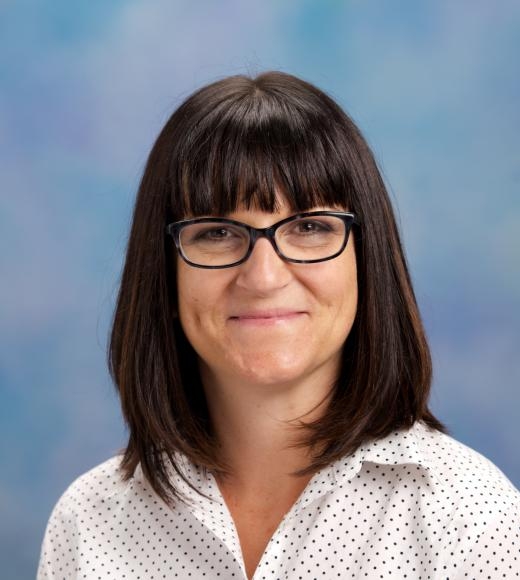
(Brooklyn Reader) Erin DiCaprio, May 19
Wear a mask, but skip the gloves. Don't sanitize the apples. And if you are older than 65, it's probably best to still order your groceries online.
As a food virologist, I hear a lot of questions from people about the coronavirus risks in grocery stores and how to stay safe while shopping for food amid the pandemic. Here are answers to some of the common questions.
https://bgr.com/2020/05/19/coronavirus-food-safety-tips-grocery-shopping-wear-a-mask/
https://www.expressnews.com/news/article/Here-s-how-to-stay-safe-while-buying-groceries-15280166.php
The Conversation https://www.youtube.com/watch?v=TICHjPLwcIY https://theconversation.com/heres-how-to-stay-safe-while-buying-groceries-amid-the-coronavirus-pandemic-138683
New bioinsecticide promises help with tree nut pests
(Farm Press) Tim Hearden, May 19
….“Based on what I hear from some growers and the biopesticide industry data, there has been a steady increase in biopesticide use,” said Surendra Dara, a University of California Cooperative Extension entomologist.
https://www.farmprogress.com/crop-protection/new-bioinsecticide-promises-help-tree-nut-pests
These 5 foods show how coronavirus has disrupted supply chains
(Nat Geo) Sarah Gibbens, May 19
… “What we have is a low-cost and efficient system that allows for huge variety and attention to individual tastes,” says Daniel Sumner, an economist at the University of California, Davis.
“A dairy farm has milk coming out of the cow into a tank. That milk must be pasteurized and packaged, meeting lots of food safety standards,” says Sumner.
Individual farms generally can't afford the equipment necessary to process milk on site without raising prices significantly. “Nowhere is a dairy farm suited to send milk directly to a store,” Sumner says.
Open Farm 2018 and UC ANR promote ag technology
A torrent of technology is flowing into the agricultural sector. To make sense of it, UC Agriculture and Natural Resources, Fresno State and West Hills Community College came together with technology vendors and growers at Open Farm 2018, held in October at UC ANR's Kearney Agricultural Research and Extension Center in Parlier.
“A lot of technology is coming out,” said Kearney director and UC Cooperative Extension agronomy specialist Jeff Dahlberg. “I need to caution you, it's not all is based on science. We are helping with testing.”
Dalhberg has been working with Blue River Technologies to monitor the growth of dozens of sorghum cultivars. Throughout the growing season, Blue River flew drones over the sorghum nursery with cameras to capture their growth and development.
“We have a huge phenotypic dataset,” Dalhberg said. “It will be compared at the genetic level with plant samples and help us identify genes associated with drought tolerance.”
At Open Farm, Dahlberg's field presentation was paired with Smartfield, a company that uses fixed cameras and field sensors to gather information for “big data crunching.”
PowWow Energy, based in San Francisco with a field office at the Water, Energy and Technology (WET) Center at Fresno State, met near a well at Kearney to explain how the company can help growers with decision support tools. The company believes their technology will be useful for farmers tracking groundwater usage, data that will be key to complying with new rules associated with the Sustainable Groundwater Management Act (SGMA). SGMA, signed by Gov. Brown in 2014, gives local agencies the authority to manage groundwater in a way that achieves sustainability by 2042.
UCCE agriculture mechanization specialist Ali Pourezza introduced a prototype he developed with junior specialist German Zuniga-Ramirez that he believes will make early detection of the devastating citrus disease huanglongbing as easy as taking a photo with a smartphone camera.
The idea is based on the optical characteristics of the disease in leaves. By using a polarizing light, leaves on diseased trees are immediately identified. Infected trees can then be torn out before insects have the chance to spread the disease to other trees.
Pourezza and Zuniga-Ramirez are seeking funding to take the prototype to the next level, and eventually commercialize the product.
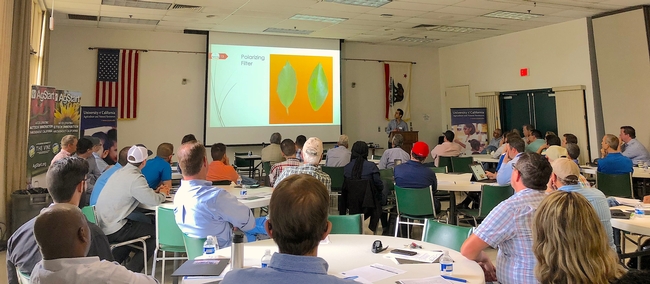
This sampling of innovations being showcased at Kearney is part of a continuing effort by UC to connect the ag community with technology developers and resources that is shepherded by a new UC ANR program called The VINE, Verde Innovation Network For Entrepreneurship. The VINE was created by UC ANR in 2017 to link entrepreneurs with mentors, advisors, collaborators, events, competitions and education.
At Open Farm 2018, UC ANR vice president Glenda Humiston was the keynote speaker. She outlined three areas where farmers, the technology sector and academia can work together to accelerate technology application in rural parts of California: improve broadband access, identify high-value uses for biomass and establish water infrastructure in rural communities.
To address the broadband issue, Humiston is leading an initiative to document mobile internet speed across California – including rural areas. In April 2019, Humiston plans to enlist 4-H members across the state to test internet speed using the free smartphone app CalSpeed several times over a period of a week.
“This will give us a snapshot of mobile broadband service availability,” Humiston said.
The crisis in the Sierra Nevada – where millions of trees died from the drought of 2010-16 – could prompt the development of high-value uses of biomass and establish a market for biomass derived in the agricultural sector, she said.
Humiston also took the opportunity to ask participants to help make sure the critical services UC ANR provides – including county-based UC Cooperative Extension, nine research and extension centers, the UC integrated pest management program, 4-H youth development, UC Master Gardeners and others – continue to fuel the California economy. Diminished funding from the State of California is taking a toll on the UC ANR budget.
“We need people like you to work with the VINE to set up improved support,” Humiston said.
Winners named in ASABE ag robotics competition
Among the advanced teams, the University of Georgia, University of Florida and UC Davis finished second, third and fourth, respectively. Zhejiang University and Clemson University claimed those runner-up spots among the beginner teams. The beginners' race was especially tight, with the top two teams achieving perfect scores. CAU used speed to edged out Zhejiang, completing the required technical task one second faster than Zhejiang. Teams from Cal Poly (6th place) and UC Merced (7th place) also competed on the beginners board.
“All the teams incorporated innovative solutions in their robot designs,” says ASABE member Alireza Pourreza, University of California Cooperative Extension agricultural mechanization specialist, who coordinated the 2018 event.
This year's challenge involved identification, sorting, and harvesting of apples. The robots were required to autonomously harvest “apples” on a field measuring 8 feet by 8 feet. The robots identified and selected eight mature apples (red ping-pong balls), removed and disposed of eight diseased or rotten apples (blue ping-pong balls) and left eight immature apples (green ping-pong balls) on the tree.
"China Agricultural University's Dream team presents one of the more prodigious designs in competition, covering two lanes at once and picking apples flawlessly," tweeted Michael Gutierrez, a University of Florida Extension water specialist, @IrriGatorUF https://twitter.com/IrriGatorUF/status/1024285164682264577.
“The increasing interest in the ASABE robotics competition every year reflects a global response to the need of automation and robotics in agriculture,” explains Pourreza, who is based at UC Davis. “We aim to motivate young agricultural engineers to engage more with robotics and acquire an early-career experience that will prepare them for the future of agriculture and smart farming.”
Fifteen university teams from the U.S., Canada and China competed in this year's contest. Sponsored by the American Society of Agricultural and Biological Engineers, the ASABE Robotics Student Design Competition allows undergraduate and graduate students to develop skills in robotic systems, electronics and sensing technologies by simulating a robotics solution to a common agricultural process.
Founded in 1907, ASABE is an international scientific and educational organization dedicated to the advancement of engineering applicable to agricultural, food and biological systems.
MORE INFORMATION: 2018 ASABE robotics competition website: https://www.asabe.org/Awards-Competitions/Student-Awards-Competitions-Scholarships/Robotics-Student-Design-Competition
Video of 2016 competition: https://www.youtube.com/watch?v=U1ymUiCr3Mc
Video of 2017 competition: https://vimeo.com/250379863
College students to build apple-picking robots in ASABE competition
Nineteen teams of college students from top universities in the U.S., Canada and China will compete to build robots to mechanize farm work at the American Society of Agricultural and Biological Engineers Annual International Meeting in Detroit.
The 2018 ASABE Student Robotics Challenge, being organized by Alireza Pourreza, University of California Cooperative Extension agricultural mechanization specialist, will be held on July 31.
“The labor availability for agriculture is decreasing while the need for more food is increasing to feed the growing world population,” said Pourreza, who is based in the UC Davis Department of Biological and Agricultural Engineering. “So agriculture should switch to technologies that are less labor-dependent, such as using more robots, to overcome this challenge.”
The ASABE Student Robotics Challenge provides an opportunity for undergraduate and graduate students to demonstrate their knowledge and skills of robotics in agriculture.
“The goal of this event is to encourage young agricultural engineers to get involved in building robots for agricultural applications and to get experienced as the next generation of farmers,” Pourreza said.
The challenge will be to simulate the harvest and storage of apples, a crop commercially grown in several states. The students will design and operate robots that will autonomously harvest “apples” on field that measures 8 feet by 8 feet. The robots will harvest eight mature apples (red ping-pong balls), remove and dispose of eight diseased or rotten apples (blue ping-pong balls) and leave eight immature apples (green ping-pong balls) on the tree.
This year, the competitors are being divided into a beginner division and an advanced division.
Beginner Teams
California Polytechnic State University Green and Gold Mustangs
China Agricultural College China Ag, Beginners
McGill University We Are Groots
Purdue ABE Robotics
Purdue Harvestiers
Texas A&M Texas A&M
University of California Merced Bobcats
University of Nebraska Lincoln HuskerBots 2
University of Nebraska Lincoln HuskerBots3
University of Wisconsin River Falls Falcon Robotics
Zhejiang University ZJU team 1
Zhejiang University ZJU team 2
Clemson University CARA
Advanced Teams
China Agricultural College Dream
McGill University Agrobots
University of Georgia UGA Engineers
University of California – Davis Ag-Botics
University of Florida RoboGators
University of Nebraska Lincoln HuskerBots 1
The competition will be held in Cobo Center Exhibit Hall, 1 Washington Blvd., Detroit, Michigan. There will be three rounds throughout the day and each team will participate once in each round.
For more information, visit the 2018 ASABE robotics competition website: https://www.asabe.org/Awards-Competitions/Student-Awards-Competitions-Scholarships/Robotics-Student-Design-Competition.
Video of 2016 competition: https://www.youtube.com/watch?v=U1ymUiCr3Mc
Video of 2017 competition: https://vimeo.com/250379863
UC scientist gives orchards a whole new color scheme
For centuries, farmers have used all the colors of the rainbow to assess their orchards: The bright pink of blossoms in springtime, the vibrant green of heathy leaves, the red blush on fruit ready to harvest.
However, there are wavelengths beyond what a human eye can see that also provide valuable information about the crop – including tree vigor, plant stress, water use and fertilizer needs.
UC Cooperative Extension agricultural engineering advisor Ali Pourreza is peering into these previously invisible colorations to create a virtual orchard that will quickly, easily and inexpensively allow farmers and scientists to manage orchards for optimum production.
To develop his first virtual orchards, Pourreza launched a camera-equipped drone over an orchard at the UC Kearney Agricultural Research and Extension Center in Parlier. As the drone flies over the trees, it snaps thousands of photos and, using photogrammetry and software that stiches the images together, makes a three-dimensional point cloud model of the orchard.
A computer program can make colors that are invisible to the human eye – such as near infrared, red edge and ultraviolet – into imagery that illuminates key crop health indicators. Near infrared indicates the amount of healthy foliage, plant vigor and crop type. If the trees have low near infrared values, it means the plants are under stress. Red edge indicates plant stress and nitrogen content. High red edge values indicate nitrogen stress and low water content in plant tissues.
Patrick Brown, a pomology professor at UC Davis, is planning to use the virtual orchard to map nitrogen use in citrus.
“We are currently working on developing models to help growers determine their fertilization demands and have been contrasting the results from real orchards with the virtual orchard,” Brown said. “We have already utilized the approach to contrast the estimates of tree growth and yield with whole tree excavations and harvests to help validate the virtual approach and provide a more accurate estimate of tree nitrogen demand.”
Ultimately, Brown hopes to develop a way for growers to rapidly and cheaply estimate the nitrogen demand of their orchards, monitor the status of their orchards and manage nitrogen fertilizer applications.
In addition to the color variations brought to light by the virtual orchard, the system provides detailed data on other aspects of the crop development.
“We can learn canopy height and width, the spacing between the trees, total leaf area, canopy density and the amount of shaded area in the orchard,” Poureza said.
This data is of interest to scientists studying plant development, soil health and irrigation.
For example, UCCE agricultural water management specialist Daniele Zaccaria is researching the impact of soil-water salinity on water use by pistachio trees in the San Joaquin Valley.
“In our on-going research study we are characterizing the functional relationships between soil-water salinity, canopy size and density and evapotranspiration of pistachio trees through the light interception by the canopy,” Zaccaria said. “We plan to work with Ali to see how the virtual orchard approach can represent that and simulate the physical process of soil evaporation and tree transpiration as a result of different canopy sizes and densities intercepting different amounts of solar radiation.”
Zaccaria said he also plans to deploy a similar approach to understand how different canopy sizes, planting densities and row orientations found in commercial citrus orchards in the San Joaquin Valley – from navel oranges, to mandarins and lemons – can affect the citrus water demand and use.
In addition to the rich data that scientists can glean from the virtual technology, Pourreza envisions many applications of this technology for farmers, including yield forecasting, blossom mapping, variable pesticide application and robotic harvesting.

